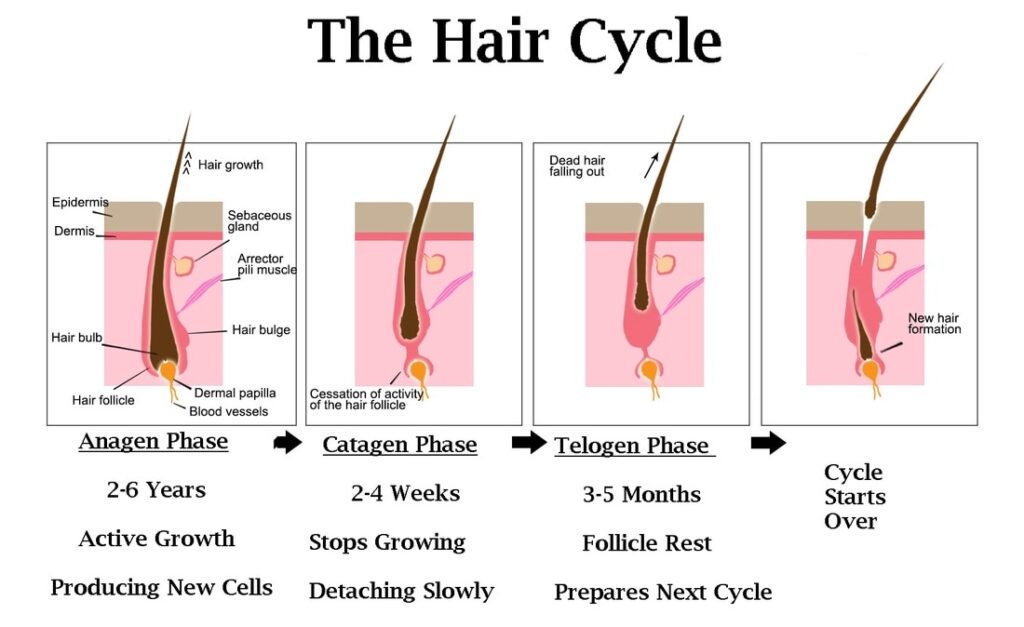A common reason for dermatologist visits is the concern of increased hair loss. It’s crucial to distinguish between pathological conditions that lead to increased hair loss and physiological states associated with the telogen phase of the hair cycle. The human scalp contains around 100,000 to 150,000 hair follicles. Each hair follicle independently undergoes a cycle with three distinct stages: Anagen (growth period), Catagen (transformation period), and Telogen (resting period). To prevent massive hair loss, all hair follicles function at different stages concurrently.
Let’s explore each stage in detail.

Anagen (Growth Period)
This growth phase is when approximately 90 percent of scalp hair follicles are believed to be active. At this stage, the scalp’s terminal hair grows at a rate of approximately 0.3 mm per day, with the anagen state lasting from two to six years. In contrast, eyebrow hair grows at a slower rate of 0.1 mm per day, with an anagen phase of two to three months.
Catagen (Transformation Period)
This transformation phase is when the hair follicle halts hair production, ceases to grow, and disconnects from the dermal papilla. This phase typically lasts about three weeks.
Telogen (Resting Period)
This resting phase follows the catagen phase and lasts for two to three months on the scalp. The hair, in a resting state, eventually falls out. Normally, 50 to 150 telogen hairs fall out each day.
After the telogen phase concludes, the cycle restarts with the anagen phase, initiating new hair growth. There are instances when the telogen phase is prolonged, a condition known as telogen effluvium. During this phase, most hair follicles enter the telogen phase and shed, leading to reduced hair density as the follicles do not transition to the anagen phase post-hair loss. This condition is temporary, and hair growth will resume its cycle in the anagen phase.
Pathological causes of hair loss can include hormonal changes, thyroid disorders, stress, nutritional imbalances, hereditary factors, or autoimmune diseases. It’s vital to consult with your dermatologist to determine whether we are dealing with telogen effluvium, a pathological cause of hair loss, or a part of the normal hair cycle.



 By myulikeadmin
By myulikeadmin



